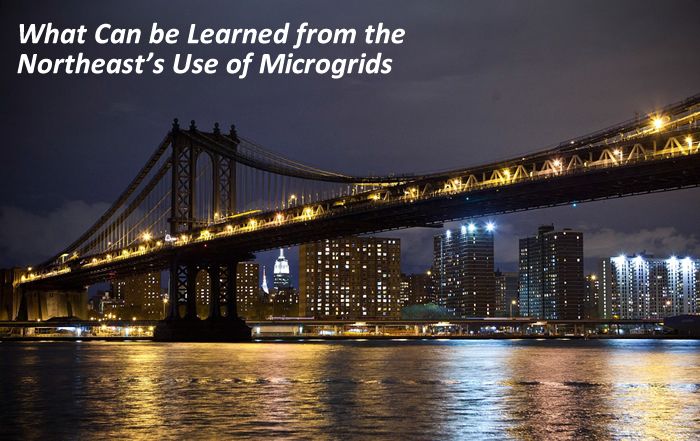State leaders in the Northeast should keep watch of neighboring states to share best practices and innovative solutions for microgrids. Stakeholders can also look nationwide to other states including California and Illinois, where officials are creating incentives and addressing regulatory challenges.
Jessica Ciccone Adams and Kristen Nye Larson | Lexington Institute
As incentives for different stakeholders have begun to align, microgrids are gaining momentum. Indeed, this momentum is indicative of a paradigm shift as federal investments in new energy sources come online, state and local governments plan for resiliency in the face of severe weather, utilities strive to optimize energy storage, and technology providers from different sectors pursue opportunities to disrupt and innovate. In terms of investment, development and deployment, as new vendors enter this space, and previously undiscovered projects come to the fore, the robustness of the microgrid sector becomes increasingly clear.2
Connecticut, New York and New Jersey are three states where the stakeholders’ incentives are aligning. In an effort to help others understand the forces at work, this paper discusses: How the projects are funded; their implementation; hurdles to overcome; and questions to consider moving forward.
Connecticut leads the nation in the establishment and development of microgrids, with projects underway in several cities, utilizing innovative financing mechanisms.
In New York, where some 8 million customers experienced sustained power interruptions in late October 2012, initiatives underway feature the diverse incorporation of renewable energy sources and energy storage in addition to increased reliability of electricity supplies.
New Jersey policymakers have embraced elements of models being developed by these two neighboring states, while laying important groundwork for microgrids to support vital transportation services.
Also discussed in this report are significant regulatory and governance challenges to microgrid implementation, and various approaches to their resolution.
Lexington Institute
The content & opinions in this article are the author’s and do not necessarily represent the views of AltEnergyMag
Comments (0)
This post does not have any comments. Be the first to leave a comment below.
Featured Product


